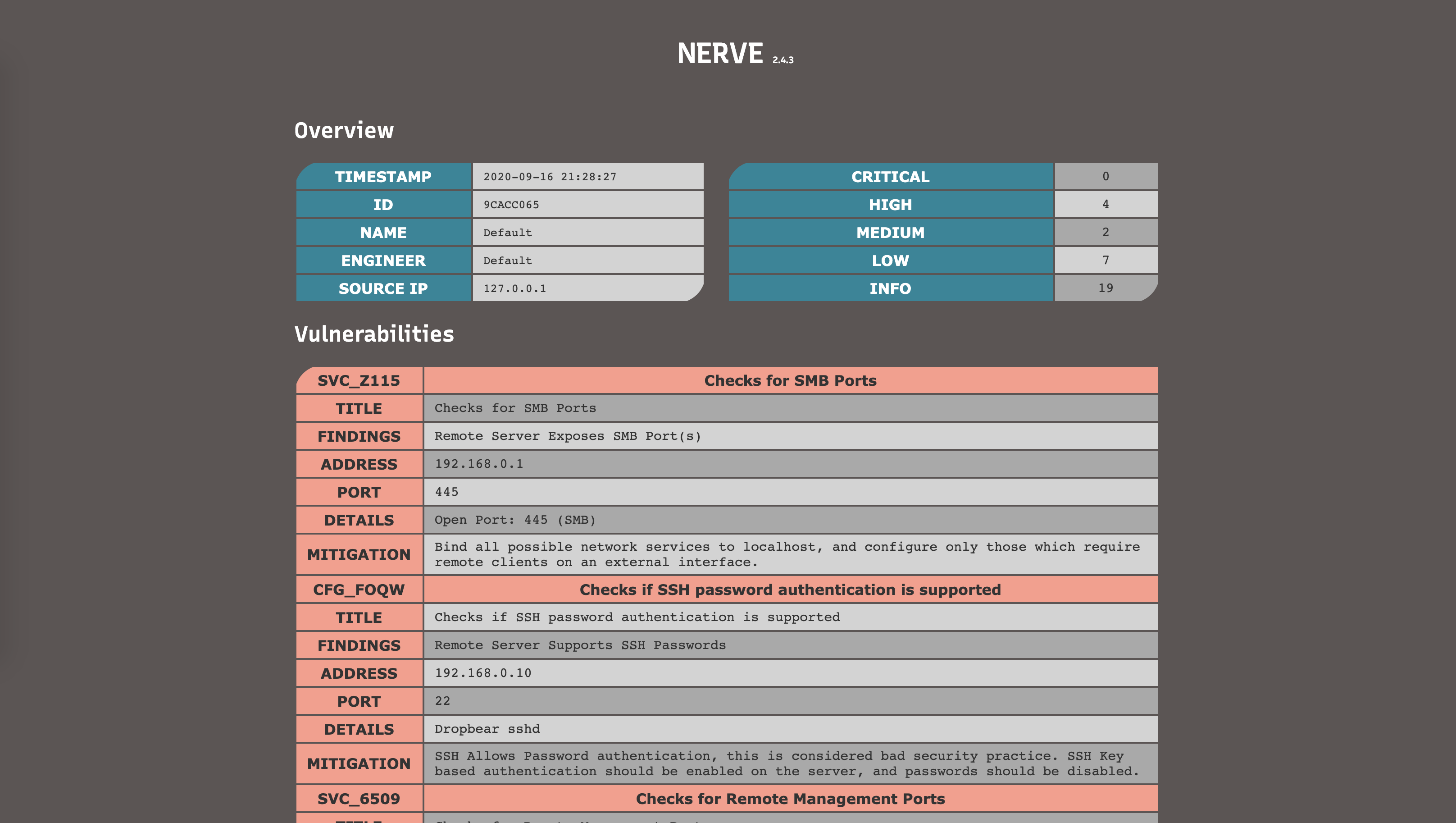Network Exploitation, Reconnaissance & Vulnerability Engine (N.E.R.V.E)
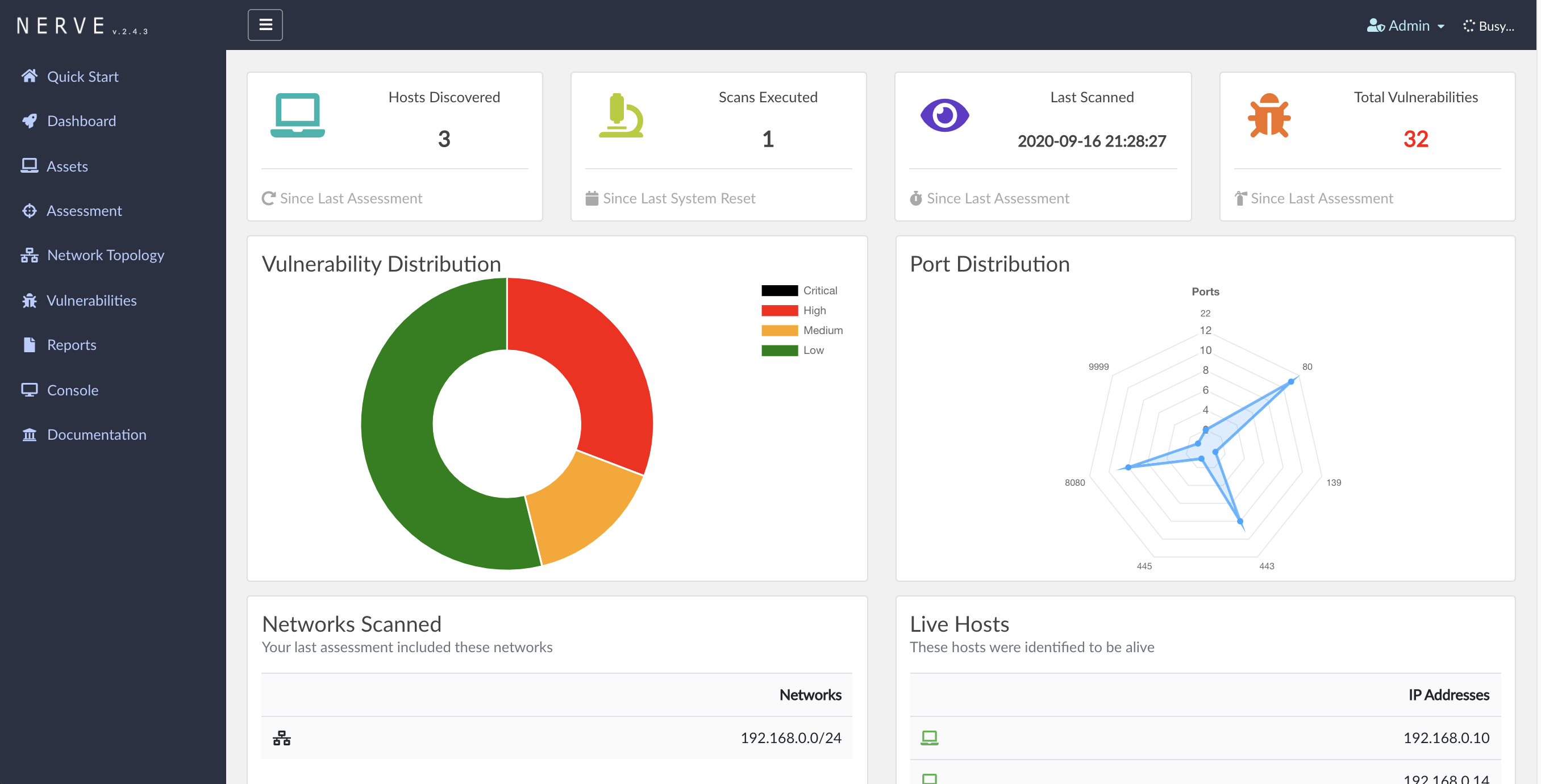
Table of Contents
- Continuous Security
- About NERVE
- Prerequisites
- Installation
- Security
- Usage
- License
- Mentions
- Screenshots
Continuous Security
We believe security scanning should be done continuously. Not daily, weekly, monthly, or quarterly.
The benefit of running security scanning contiuously can be any of the following:
- You have a dynamic environment where infrastructure gets created every minute / hour / etc.
- You want to be the first to catch issues before anyone else
- You want the ability to respond quicker.
NERVE was created to address this problem. Commercial tools are great, but they are also heavy, not easily extensible, and cost money.
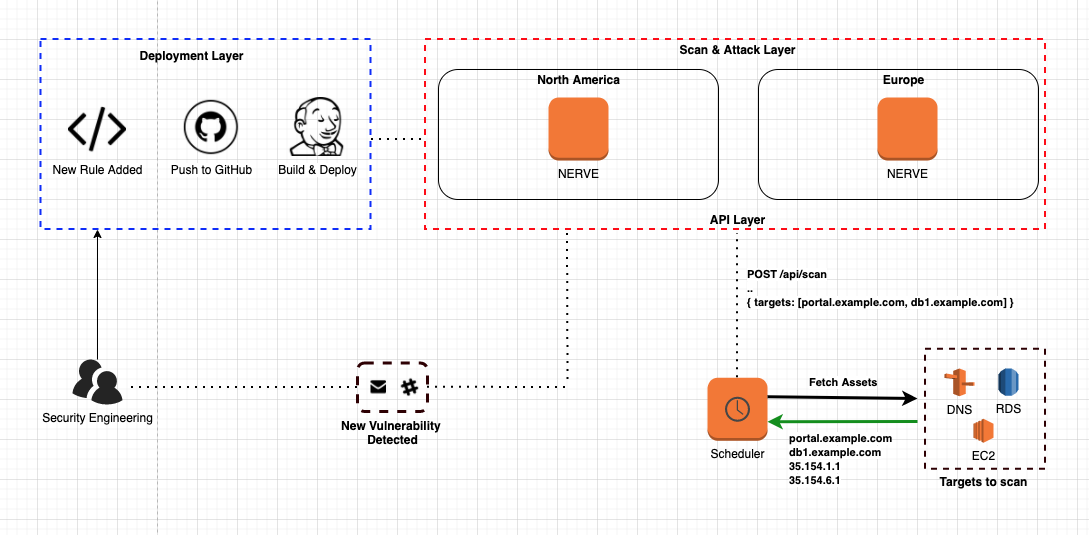
About NERVE
NERVE is a vulnerability scanner tailored to find low-hanging fruit level vulnerabilities, in specific application configurations, network services, and unpatched services.
Example of some of NERVE's detection capabilities:
- Interesting Panels (Solr, Django, PHPMyAdmin, etc.)
- Subdomain takeovers
- Open Repositories
- Information Disclosures
- Abandoned / Default Web Pages
- Misconfigurations in services (Nginx, Apache, IIS, etc.)
- SSH Servers
- Open Databases
- Open Caches
- Directory Indexing
- Best Practices
It is not a replacement for Qualys, Nessus, or OpenVAS. It does not do authenticated scans, and operates in black-box mode only.
Features
NERVE offers the following features:
- Dashboard (With a Login interface)
- REST API (Scheduling assessments, Obtaining results, etc)
- Notifications
- Slack
- Webhook
- Reports
- TXT
- CSV
- HTML
- XML
- Customizable scans
- Configurable intrusiveness levels
- Scan depth
- Exclusions
- DNS / IP Based
- Thread Control
- Custom Ports
- Network Topology Graphs
We put together the Graphical User Interface primarily for ease of use, but we will be putting more emphasis on detections and new signatures than creating a full blown user interface.
Prerequisites
NERVE will install all the prerequisites for you automatically if you choose the Server installation (CentOS 7.x and Ubuntu 18.x were tested) (by using install/setup.sh script). It also comes with a Dockerfile for your convenience.
Keep in mind, NERVE requires root access for the initial setup on bare metal (package installation, etc).
Services and Packages required for NERVE to run:
- Web Server (Flask)
- Redis server (binds locally)
- Nmap package (binary and Python nmap library)
- Inbound access on HTTP/S port (you can define this in config.py)
The installation script takes care of everything for you, but if you want to install it by yourself, keep in mind these are required.
Installation
Deployment Recommendation
The best way to deploy it, is to run it against your infrastructure from multiple regions (e.g. multiple instances of NERVE, in multiple countries), and toggle continuous mode so that you can catch short-lived vulnerabilities in dynamic environments/cloud.
We typically recommend not to whitelist the IP addresses where NERVE will be initiating the scans from, to truly test your infrastructure from an attacker standpoint.
To make NERVE fairly lightweight, there's no use of a database other than Redis.
If you want to store your vulnerabilities long term, we recommend using the Web hook feature. At the end of each scan cycle, NERVE will dispatch a JSON payload to an endpoint of your choice, and you can then store it in a database for further analysis.
Here are the high level steps we recommend to get the most optimal results:
- Deploy NERVE on 1 or more servers.
- Create a script that fetches your Cloud services (such as AWS Route53 to get the DNS, AWS EC2 to get the instance IPs, AWS RDS to get the database IPs, etc.) and maybe a static list of IP addresses if you have assets in a Datacenter.
- Call NERVE API (
POST /api/scan/submit) and schedule a scan using the assets you gathered in step #2. - Fetch the results programmatically and act on them (SOAR, JIRA, SIEM, etc.)
- Add your own logic (exclude certain alerts, add to database, etc.)
Docker
Clone the repository
git clone git@github.com:PaytmLabs/nerve.git && cd nerve
Build the Docker image
docker build -t nerve .
Create a container from the image
docker run -e username="YOUR_USER" -e password="YOUR_PASSWORD" -d -p 80:8080 nerve
In your browser, navigate to http://ip.add.re.ss:80 and login with the credentials you specified to in the previous command.
Server
Navigate to /opt
cd /opt/
Clone the repository
git clone git@github.com:PaytmLabs/nerve.git && cd nerve
Run Installer (requires root)
bash install/setup.sh
Check NERVE is running
systemctl status nerve
In your browser, navigate to http://ip.add.re.ss:8080 and use the credentials printed in your terminal.
Multi Node Installation
If you want to install NERVE in a multi-node deployment, you can follow the normal bare metal installation process, afterwards:
- Modify the config.py file on each node
- Change the server address of Redis
RDS_HOSTto point to a central Redis server that all NERVE instances will report to. - Run
service nerve restartorsystemctl restart nerveto reload the configuration - Run
apt-get remove redis/yum remove redis(Depending on the Linux Distribution) since you will no longer need each instance to report to itself. Don't forget to allow port 3769 inbound on the Redis instance, so that the NERVE instances can communicate with it.
Upgrade
If you want to upgrade your platform, the fastest way is to simply git clone and overwrite all the files while keeping key files such as configurations.
- Make a copy of
config.pyif you wish to save your configurations - Remove
/opt/nerveand git clone it again. - Move
config.pyfile back into/opt/nerve - Restart the service using
systemctl restart nerve.
You could set up a cron task to auto-upgrade NERVE. There's an API endpoint to check whether you have the latest version or not that you could use for this purpose: GET /api/update/platform
Security
There are a few security mechanisms implemented into NERVE you need to be aware of.
- Content Security Policy - A response header which controls where resource scan be loaded from.
- Other Security Policies - These Response headers are enabled: Content-Type Options, X-XSS-Protection, X-Frame-Options, Referer-Policy
- Brute Force Protection - A user will get locked if more than 5 incorrect login attempts are made.
- Cookie Protection - Cookie security flags are used, such as SameSite, HttpOnly, etc.
If you identify a security vulnerability, please submit a bug to us on GitHub.
We recommend to take the following steps before and after installation
- Set a strong password (a password will be set for you if you use the bare metal installation)
- Protect the inbound access to the panel (Add your management IP addresses to the allow list of the local firewall)
- Add HTTPS (you can either patch Flask directly, or use a reverse proxy like nginx)
- Keep the instance patched
Usage
To learn about NERVE (GUI, API, etc.) we advise you to check out the documentation available to you via the platform. Once you deploy it, authenticate and on the left sidebar you will find a documentation link for API and GUI usage.
GUI Documentation
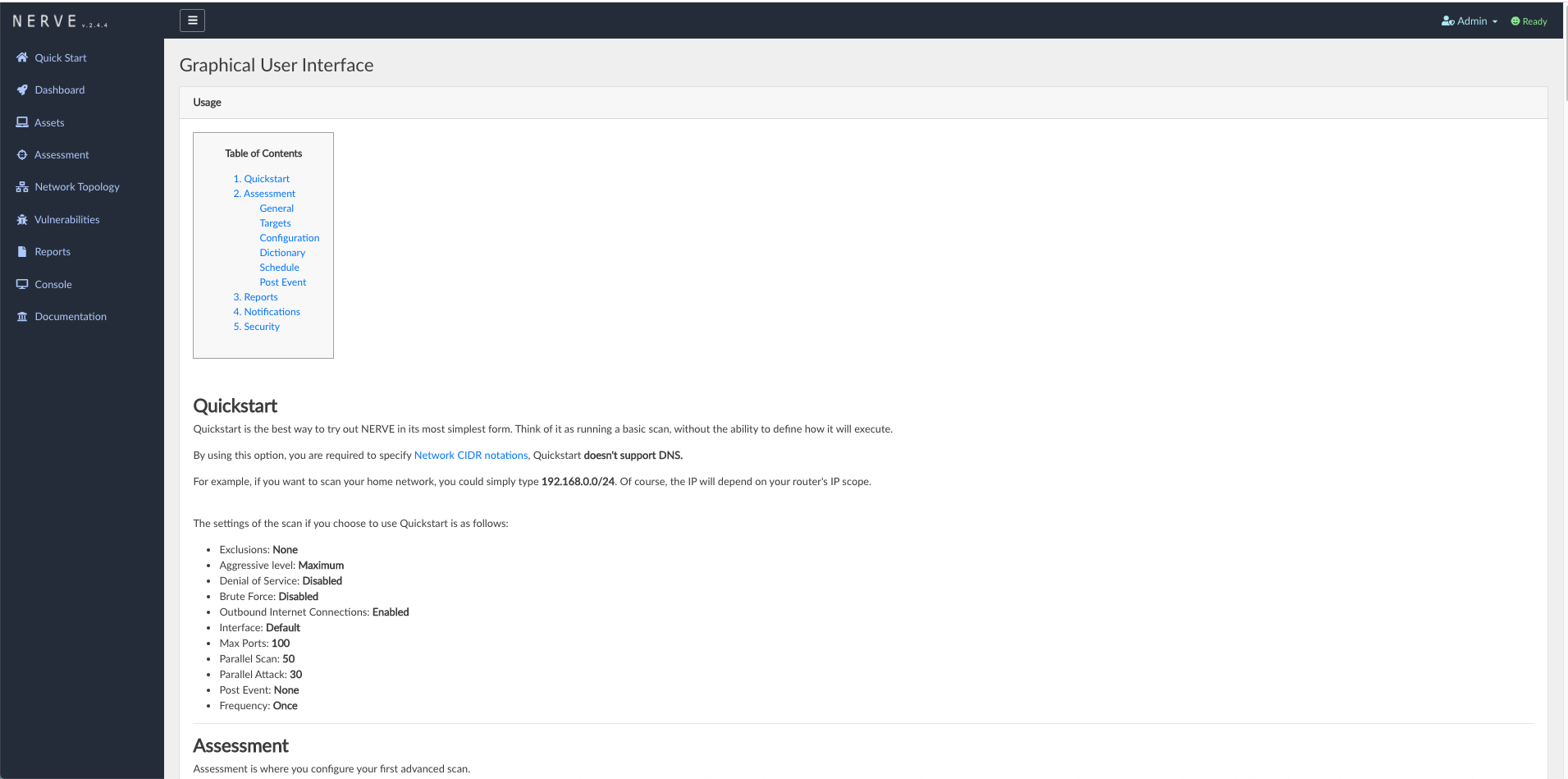
API Documentation

License
It is distributed under the MIT License. See LICENSE for more information.
Mentions
:trophy: NERVE has been mentioned in various places so far, here are a few links.
- Kitploit - https://www.kitploit.com/2020/09/nerve-network-exploitation.html
- Hakin9 - https://hakin9.org/nerve-network-exploitation-reconnaissance-vulnerability-engine/
- PentestTools - https://pentesttools.net/nerve-network-exploitation-reconnaissance-vulnerability-engine/
- SecnHack.in - https://secnhack.in/nerve-exploitation-reconnaissance-vulnerability-engine/
- 100security.com - https://www.100security.com.br/nerve
Screenshots
Login Screen
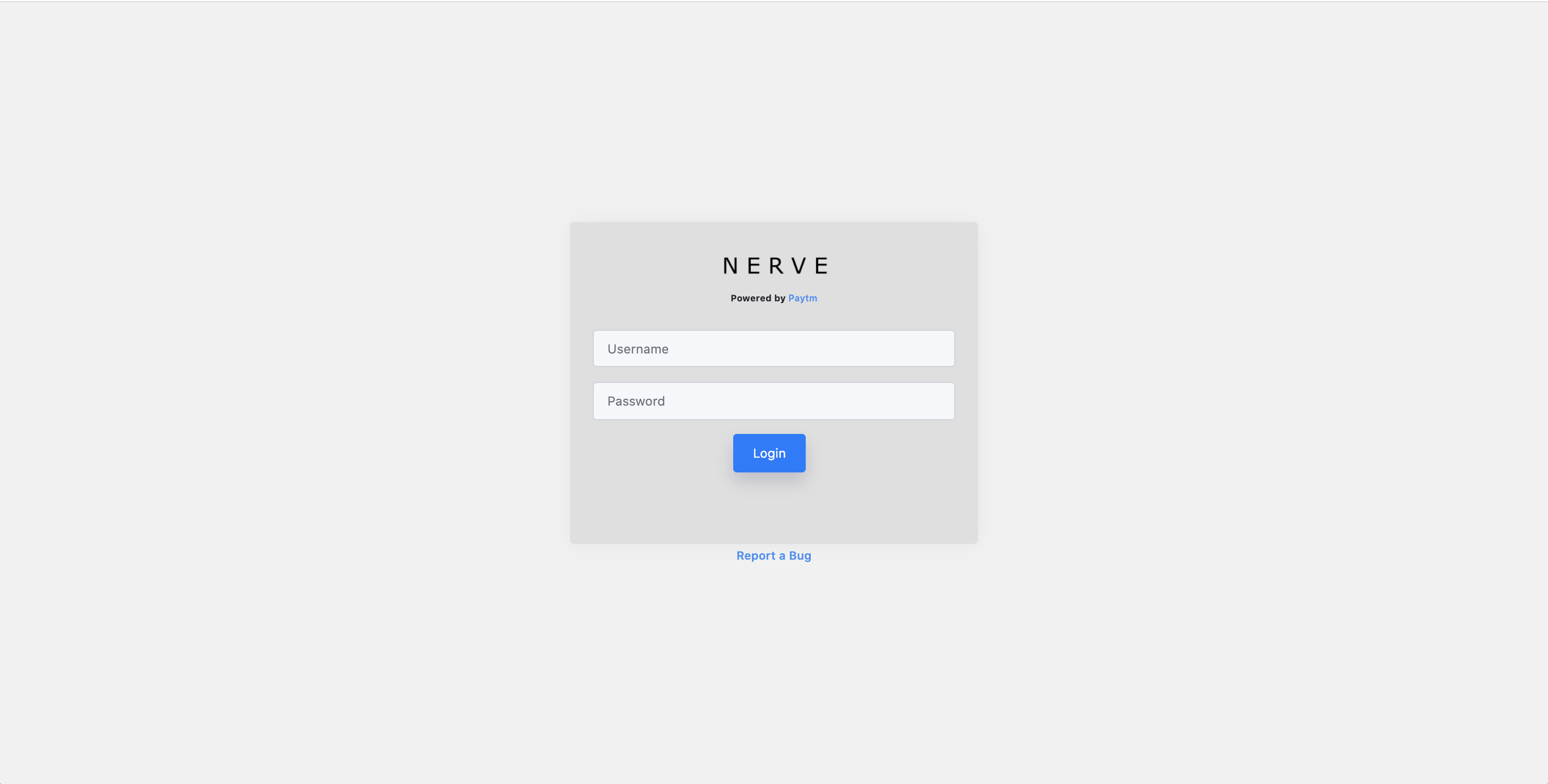
Dashboard Screen

Assessment Configuration

API Documentation
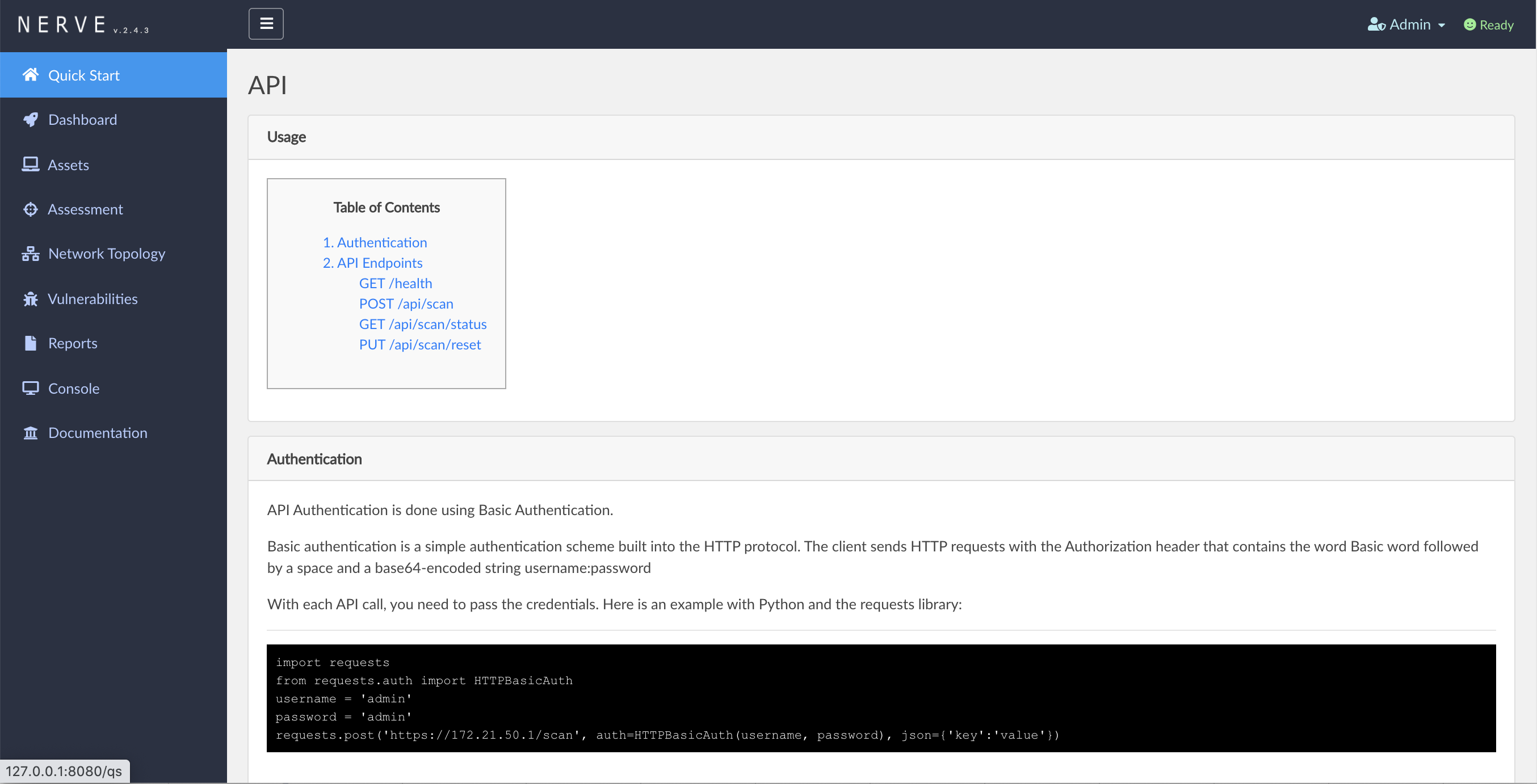
Reporting
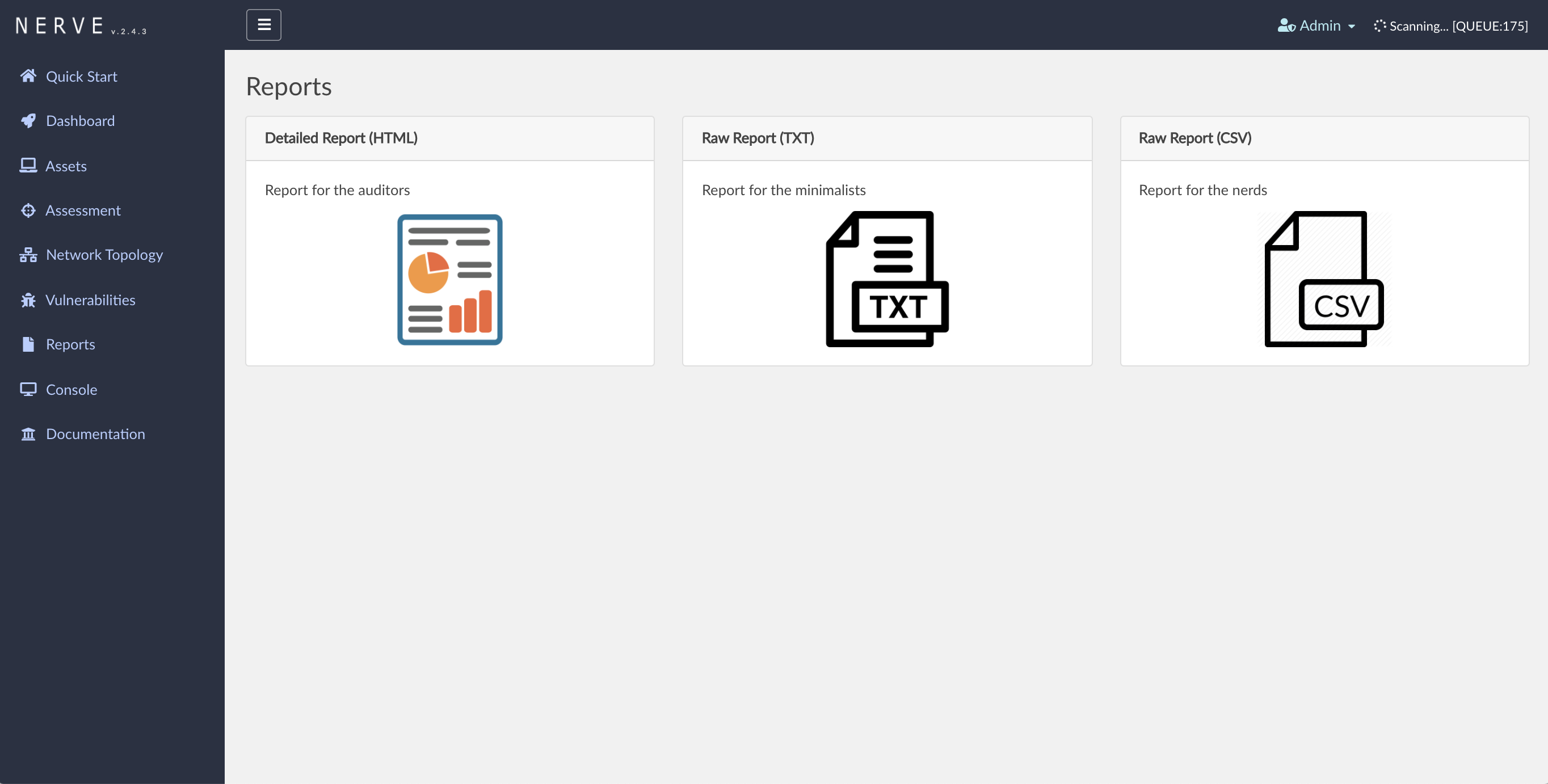
Network Map

Vulnerability page
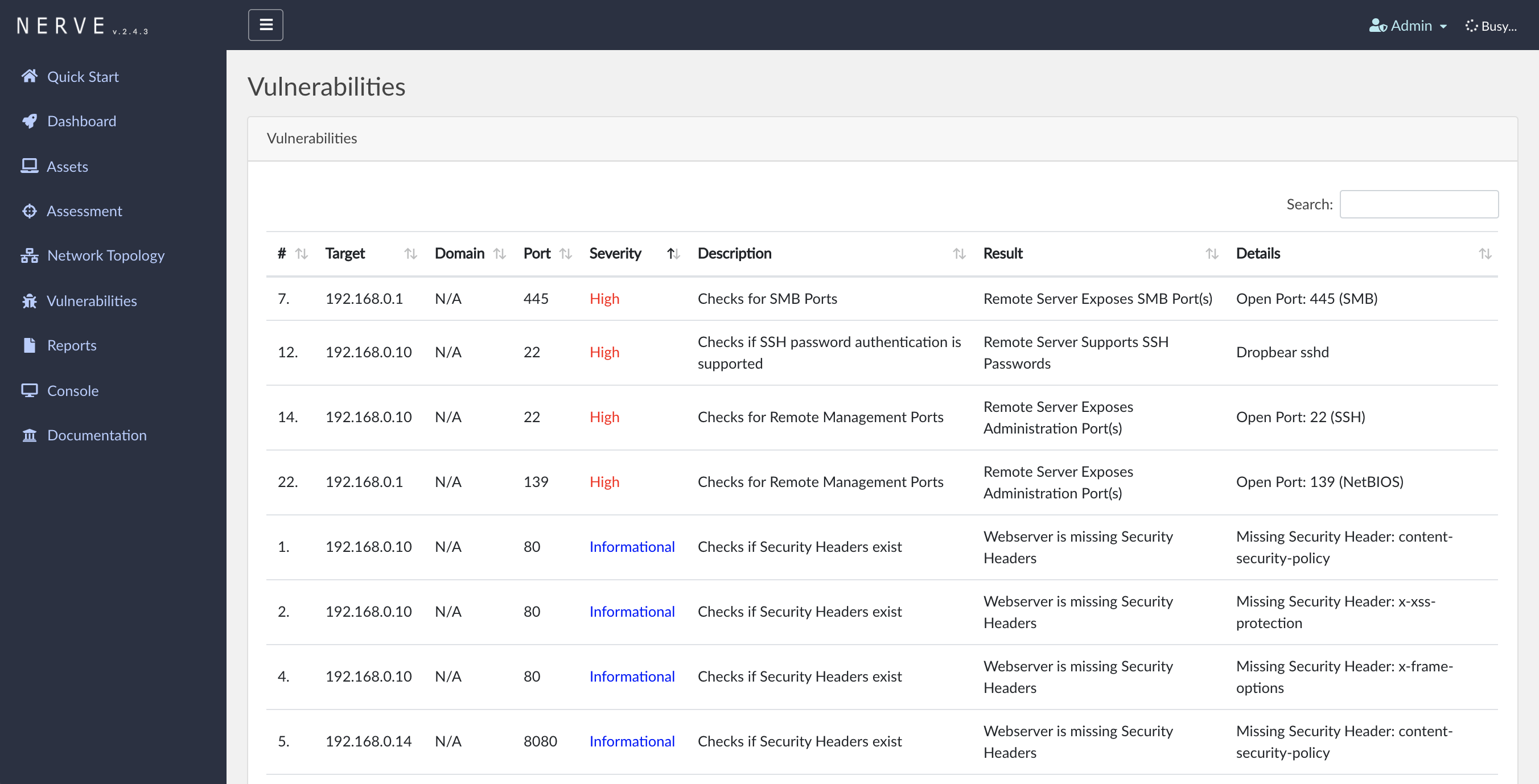
Log Console
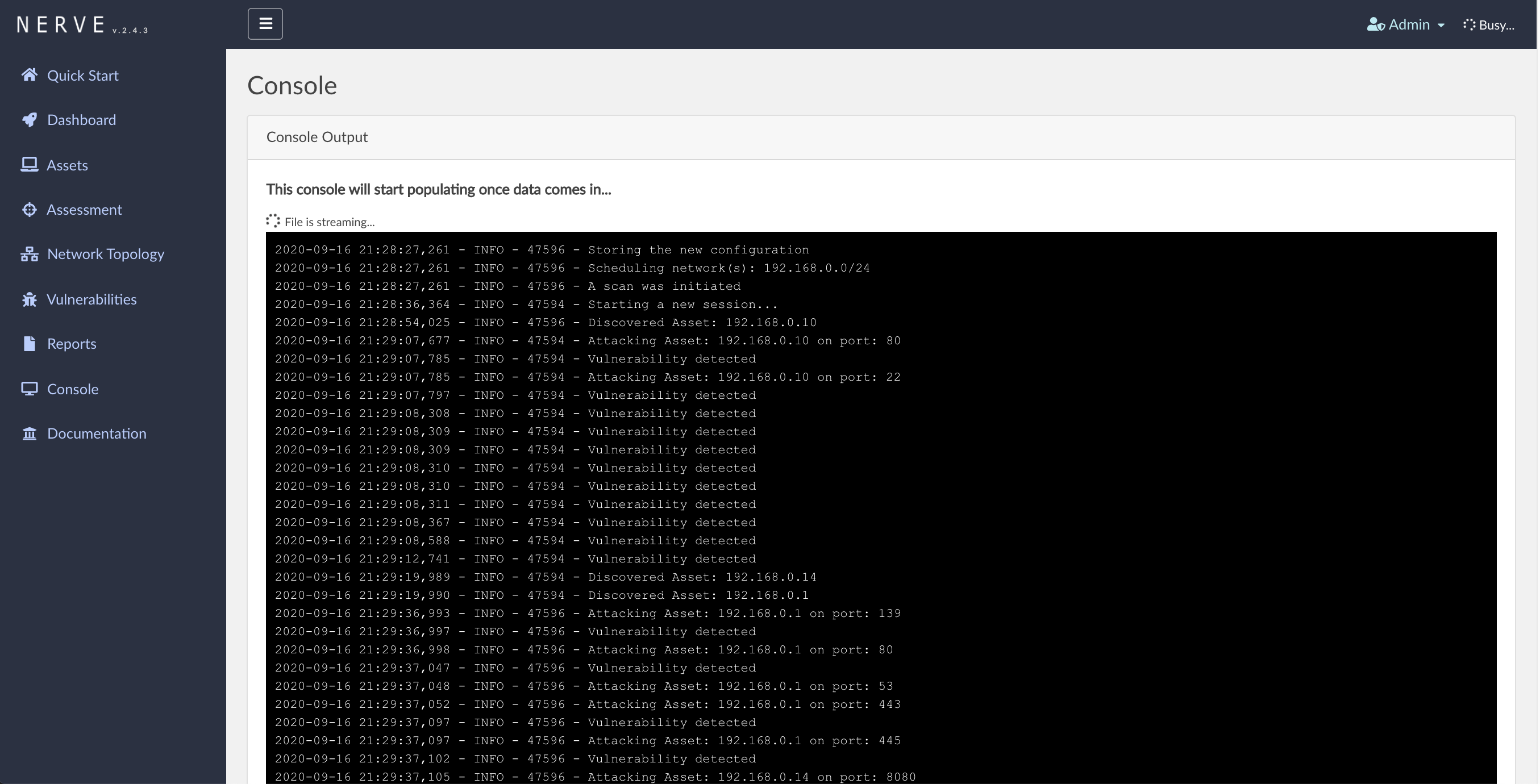
HTML Report
